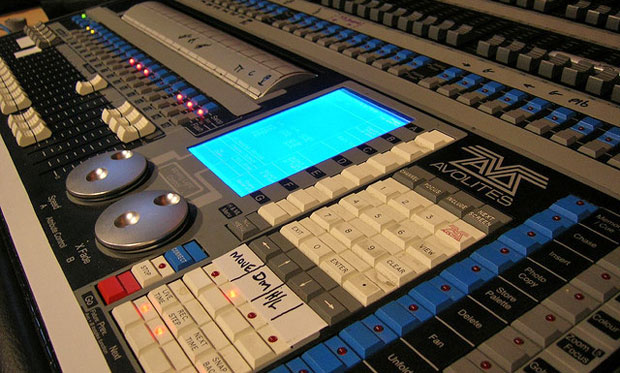
Creative Commons image from Flickr. By Rob Sayer, On Stage Lighting (original image)
Association of Lighting Designers: www.ald.org.uk
www.criticscircle.org.uk
www.youngvic.org
The Critics’ Circle organised a workshop seminar at the Young Vic for theatre and dance critics interested in learning more about how designers work. Mark Shenton, chairman of the drama section, assembled a panel of lighting and set designers, co-ordinated by Rick Fisher, chairman of the Association of Lighting Designers. The four experts – Fisher, Peter Mumford, Ian MacNeil and Jamie Vartan – have worked in opera, musicals and dance as well as drama.
Fisher explained that lighting design came to be recognised as a collaborative art form after World War II. The first time a credit appeared in a programme was in the 1950s, and although lighting gained in importance, its design wasn’t fully acknowleged as a separate profession before the late 1980s. Until recently, most lighting specialists started as theatre electricians or set designers (as Peter Mumford did). Now there are courses at drama schools and some colleges, but it’s still difficult to earn a living solely as a lighting designer, apart from those at the top of the profession. One reason, panel members said ruefully, is that production budgets are tight. Successful designers rely on their fees from the commercial theatre to support their work for small companies, who couldn’t otherwise afford their expertise.
The usual protocol is that the director of a production chooses the set and/or costume designer; together they select the lighting team. Only subsidised theatres have in-house lighting rigs and staff to operate them. Commercial operations hire the equipment and personnel they require for a show, often without knowing how long its run may be. Lighting is the last aspect of a production to be determined, once the set and performers, preferably in costume, are in place on stage. (Jamie Vartan, who works frequently for opera productions, commented that singers tend to be last-moment ‘luxuries’.)
Big ballet and opera productions don’t have previews, unlike musicals and some privileged plays. Lighting designers have to work in a highly pressurised context: the final technical rehearsal is their creative period, when nobody else is at their calmest. Being able to adjust the lighting during previews is an enviable asset. Mumford said that although he prefers to sit in on rehearsals, actors and drama directors would rather not have too many observers around. Dance people, on the other hand, have no objection. Mumford had been accustomed to being involved from early on in contemporary dance productions – for example, in his work with Siobhan Davies.

© Bill Cooper.
Lighting is often used scenically for contemporary dance, defining space, modelling bodies, suggesting moods. Since the 1970s, this style, with its use of side-lighting, has spread to other theatre productions. The technology of stage lighting has continued to develop so that effects can be much more versatile. As the panel remarked, computers are great tools, enabling a sequence of cues to be done automatically, but lighting programmes still need operators. Live performers are unpredictable and computers can go on the blink. The theatrical highlight of follow-spots is still done manually – essential for musicals, operas and dance dramas.
Ian MacNeil led the discussion of set design, taking as his examples Billy Elliot and the Young Vic production of A Doll’s House (for both of which he won design awards). He explained that the art of the designer is to help a director decide what he (or she) really wants and then provide it. The process can be an agonising one for all the collaborators as they work out what it is they are trying to say in a production. The set for Billy Elliot took over a year to determine, requiring detailed models – a very expensive undertaking at £4,500 for each model. MacNeil altered the proportions of the set for the adult performers and much smaller 12-year-old Billy, who has to carry the show. Mark Fisher, who lit the production, pointed out how the lighting changes from ‘natural’ to ‘theatrical’ for the dance sections, complete with follow-spots.
Commercial managements pay designers a new fee if a production transfers to a different theatre. Ballet and opera productions, however, are buy-outs: there are no royalties for revivals. Mumford and Vartan said it was hard to fight opera house managements that omit to invite lighting designers back for revivals, sometimes years later. They may not even be credited when productions are recorded and then sold on as DVDs. Yet without lighting, there would be no magic to supply the ‘Wow’ factor to the theatrical experience.








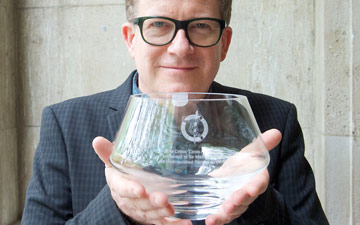
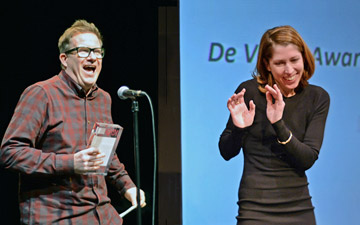
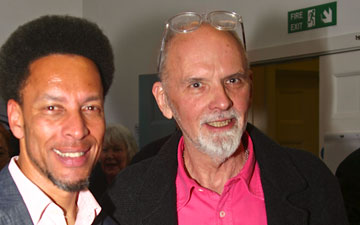
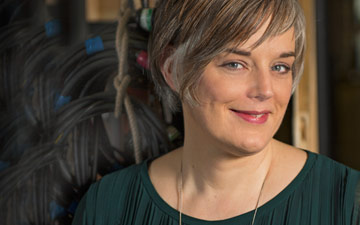
You must be logged in to post a comment.